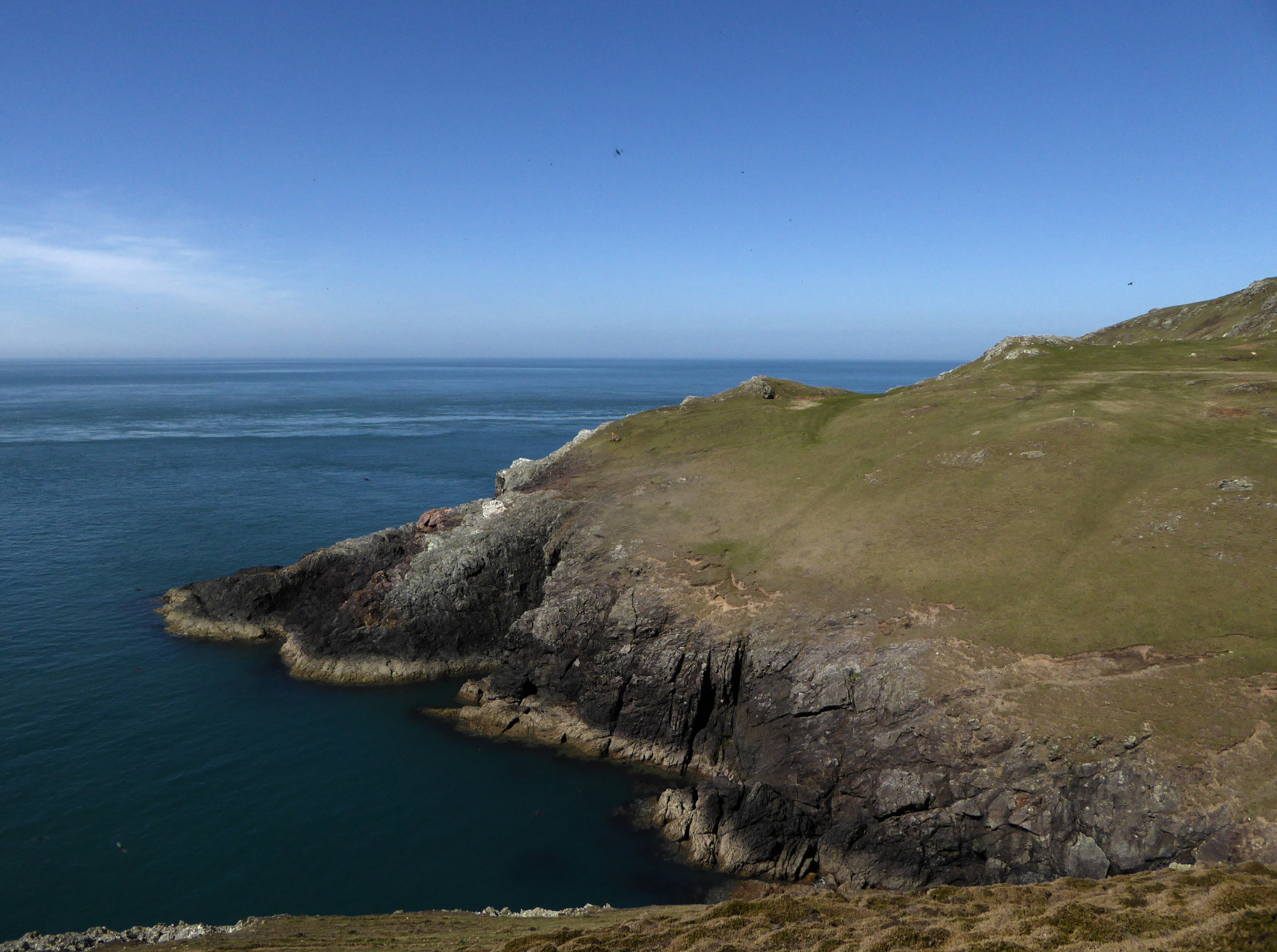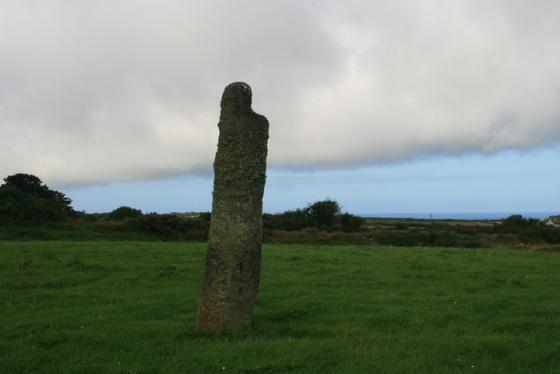
The hillside to the east is called Mynydd y Gwddel (“Hill of the Irishman”), which suggests early Christian visits or even earlier trade links.

The hillside to the east is called Mynydd y Gwddel (“Hill of the Irishman”), which suggests early Christian visits or even earlier trade links.

Although there’s little or nothing to suggest it was put up by people, it’s also a very oddly upright stone for a wholly natural outcrop.



Maen Melyn points the way towards Ynys Enlli (Island of the currents).

Maen Melyn in its clifftop position. Fynnon Fair (St Mary’s Well) is somewhere near the base of the cliffs at the bottom of the photo.

Maen Melyn upper right

Maen Melyn and a little bird looking out into the great blue yonder.

Bardsey island looking cool and distant.


A most singular stone




Maen Melyn top right, in its coastal setting .

Looking inland from Maen Melyn

Maen Melyn with Ynys Enlli in the distance
Somewhat surprisingly, it was, bar one day, exactly two years since my last visit. I was looking for somewhere to camp for a night, any where at the east end of the Lleyn would have done really, but seeing as my last time here was hampered by unseasonably bad weather, and a camp site is within a few hundred yards, it seemed sensible to start the days stone hunt at the beginning, as it were, and then any other places visited would be all on the way home.
Gee whiz tents are uncomfortable, even a chimp builds a comfy nest every day, and there’s us sleeping on the floor, like a camel, and like a camel we rise reluctantly, slowly and with great moaning noises. But eventually we are up and on our way. We drive a couple hundred yards up the road to the car park and information boards. From there just head seaward between two hills Uwch Mynydd and Mynydd y Gwyddel. Bardsey island, Ynys Enlli lies out to sea looking cool and distant, it wasn’t there last time I was here if you know what I mean, and above the standing stone is the ruins of St. Mary’s chapel, still very visible as a series of rectilinear earthworks.
Once again I forget to look for the supposed sacred well amongst the rocks below but its the stone that i’ve come for and it’s the stone that keeps my attention, such an improbable stone for standing up right all gnarled and twisted not pretty, but definitely beautiful. Why is it here though, there is no good boating landing place, perhaps it marks the well, or the hut circles above to the north, either way I’m glad I’ve made it to the end of the world here twice and seen the stone that is Maen Melyn
From Aberdaron head west towards the coast, on the map the stone isnt marked but the place where the stone is “Trwyn Maen Melyn”
Plenty of parking was found by the footpath and information board, which pronounces for our convenience the presence of the Bronze age standing stone.
Its only a short bracing ten minute walk to the stone, which is visible as we approach, almost right on the cliff edge the stone has almost fallen leaning severely at about 60 degrees.
The stone is made of the same stuff as the rocks below where the waves relentlessly pound against, it is red and gnarled and covered in small grooves/scars and looks volcanic in nature, more than that I can not say.
As nice as the stone is, its the surroundings that heavily dominate the scene, we scrambled down to the seas edge in a hope to photograph the waves crashing in and both me and Dave got a soaking from unexpected freak waves, we fared better than his camera. Get well soon.
In a hollow between two hills called Uwch Mynydd and Mynydd y Gwyddel, are the ruins of St. Mary’s chapel (Capel Fair); and below the cliff is a cave (Ogo Vair), in which there is a well (Ffynnon Vair). The point of the rock is called Braich y Pwll, and that particular part of it under which the well is situated Maen Melyn, the yellow stone. In the times of Popery this well, which was only accessible at low water, was much frequented by devotees, who superstitiously believed that if they could but carry a mouthful of the water by a circuitous and dangerous path to the summit of the hill, their wish, whatever it might be, would be surely gratified. The chapel was placed here to give seamen an opportunity of invoking the tutelar saint for protection, through the dangerous Sound of Bardsey; and probably the walls of the chapel were in those superstitious times covered with votive tablets.
from ‘The History of North Wales’ v2, by William Cathrall (1828).
In the cliffs at the west end of Lleyn is a wishing-well called Ffynnon Fair, or St. Mary’s Well; where, to obtain your wish, you have to descend the steps to the well and walk up again to the top with your mouth full of the water. Viewing the position of the well from the sea, I should be disposed to think that the realisation of one’s wish at that price could not be regarded as altogether cheap.
This spring is in the cliff just beneath the stone, it would seem.
From an article on ‘Sacred Wells in Wales’ by John Rhys, in The transactions of the Honourable Society of Cymmrodorion for 1892/3.
Blog about the well, with photos, directions and some folklore.

























